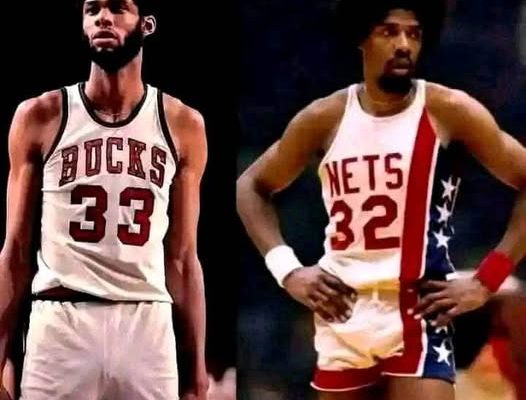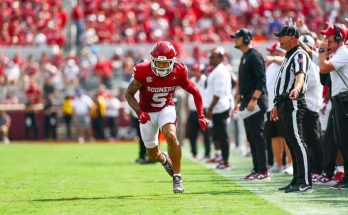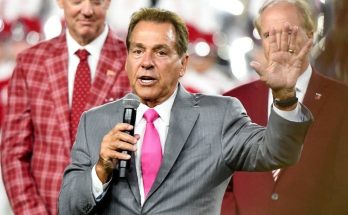The NBA Draft often conjures images of destiny, where franchises discover their future superstars and reshape their legacies with a single pick. Sometimes, however, what could have been remains a tantalizing “what if” scenario, and few moments in basketball history are as intriguing as the 1972 NBA Draft twist involving the Milwaukee Bucks, Julius Erving, and the Atlanta Hawks. This story combines talent, timing, and a dash of chaos, offering fans a glimpse of a legendary trio that never was—and the unexpected consequences that followed.
In the early 1970s, the Milwaukee Bucks were already a powerhouse. Having won their first NBA Championship in 1971, the Bucks boasted a roster that included the dominant Kareem Abdul-Jabbar (then known as Lew Alcindor) and the prolific Oscar Robertson. This pairing was revolutionary, with Abdul-Jabbar’s unstoppable skyhook and Robertson’s unmatched all-around brilliance. The Bucks’ management, eager to sustain their championship window, sought to bolster their roster even further. This ambition set the stage for the 1972 NBA Draft, where a potentially seismic moment in basketball history nearly unfolded.
The player at the center of this twist was Julius Erving, who was then a rising star in the American Basketball Association (ABA). Erving was already known for his extraordinary athleticism, high-flying dunks, and smooth scoring ability, earning the nickname “Dr. J.” Although the ABA was considered a rival league to the NBA at the time, many regarded its stars as legitimate talents capable of competing at the highest level. Erving was among the most coveted players, and his eventual transition to the NBA would alter the league’s trajectory.
In 1972, the Milwaukee Bucks made a surprising move during the NBA Draft by selecting Julius Erving. While this seemed like a brilliant stroke, given Erving’s undeniable talent and the possibility of joining forces with Abdul-Jabbar and Robertson, the reality was more complicated. Erving was already under contract with the ABA’s Virginia Squires, and the NBA teams had no binding rights over ABA players. The Bucks’ pick was largely symbolic, an attempt to stake a claim on a player they hoped to eventually sign, but it was far from guaranteed.
Complicating the matter further was the Atlanta Hawks, who somehow became entangled in the situation. The Hawks, under the guidance of their front office, attempted to maneuver around draft rules and regulations concerning player rights and contracts. This maneuvering, which was seen as an attempt to circumvent league protocols, led to punitive actions by the NBA. The Hawks were fined for their part in the controversial dealings related to the draft rights and players under contract with the ABA. The fines highlighted the tension and rivalry not only between teams but also between the competing leagues at the time.
Had the Bucks successfully signed Julius Erving, the NBA landscape would have looked remarkably different. Imagine a Milwaukee team featuring Abdul-Jabbar, Oscar Robertson, and Dr. J—three transcendent talents, each capable of dominating the league in their own right. The dynamic inside and outside, veteran savvy and youthful explosiveness, would have created a formidable force unmatched in NBA history. Such a trio could have potentially redefined the league’s power structure and shifted championship outcomes in the mid-1970s.
Julius Erving’s eventual path saw him join the NBA years later, when the ABA-NBA merger took place in 1976. By then, the Bucks had transitioned into a new era, and Abdul-Jabbar had been traded to the Los Angeles Lakers, while Robertson retired shortly afterward. Erving would go on to captivate audiences with the Philadelphia 76ers, becoming one of the most iconic figures in NBA history. However, the dream of seeing him paired with Abdul-Jabbar and Robertson in Milwaukee remains a fascinating alternate reality—a legendary trio that never got to showcase its full potential on an NBA court.
This draft episode also sheds light on the broader challenges and complexities of the NBA and ABA rivalry. During the early 1970s, the two leagues competed fiercely for talent, fan attention, and legitimacy. The drafting and signing of players who were under contract with the other league created a tangled web of negotiations, disputes, and legal battles. The Bucks’ selection of Erving was part of this larger saga, illustrating how teams sought creative ways to secure star players amid a turbulent basketball ecosystem.
The Hawks’ involvement and subsequent fines further underscore the stakes and pressures that NBA teams faced in this climate. Attempting to navigate ambiguous rules and push the boundaries of fair play, the Hawks’ actions reflected a desperate desire to build competitive rosters and not fall behind in a rapidly evolving league. The fines served as a warning and a marker of the NBA’s efforts to assert control and maintain order during a chaotic period.
Ultimately, the 1972 draft twist is more than a curious footnote; it represents a moment of near greatness and what might have been. It invites basketball fans and historians to ponder how one decision—whether a draft pick, a contract signing, or a front-office gambit—can alter the fate of franchises and the entire league. The Milwaukee Bucks’ near acquisition of Julius Erving embodies the tantalizing intersection of talent, timing, and league politics, and it remains a compelling story of dreams deferred and lessons learned.
In retrospect, the Bucks’ attempt to draft Erving was bold and forward-thinking. The franchise clearly recognized Erving’s immense potential and sought to position itself as the premier destination for basketball excellence. However, the obstacles of league rivalry and contractual commitments proved insurmountable, illustrating the complicated landscape that existed before the ABA-NBA merger simplified the player acquisition process.
Today, the NBA benefits from a unified draft and free agency system that makes such tangled scenarios a thing of the past. Players like Julius Erving can transition smoothly to the league without the complications that characterized the 1970s. Moreover, the Bucks’ history has continued to evolve, highlighted by moments such as their 2021 championship run, fueled by stars like Giannis Antetokounmpo. Yet, the story of 1972 remains a captivating chapter in the franchise’s history, a glimpse at the crossroads where basketball legends could have converged.
Reflecting on this twist also brings an appreciation for the careers of all involved. Julius Erving’s journey from ABA standout to NBA icon helped elevate the sport’s popularity and usher in an era of exciting play. Kareem Abdul-Jabbar’s dominance remains unparalleled, and Oscar Robertson’s all-around brilliance continues to inspire generations. Though they never united on the same NBA team, their individual legacies are monumental. The 1972 draft moment remains a tantalizing glimpse of a historic partnership that never came to be.
In the end, the Milwaukee Bucks’ selection of Julius Erving and the Hawks’ resulting fines reveal the fascinating intersection of basketball talent, league rivalry, and front-office strategy during a pivotal era. It is a story about ambition, risk, and the unpredictable nature of sports history. As fans look back at the 1972 NBA Draft, the “what if” lingers—what if the Bucks had succeeded? What if that legendary trio had taken the court together? Although the answers remain unknown, the story continues to spark imagination and reverence for one of basketball’s most intriguing draft twists.



